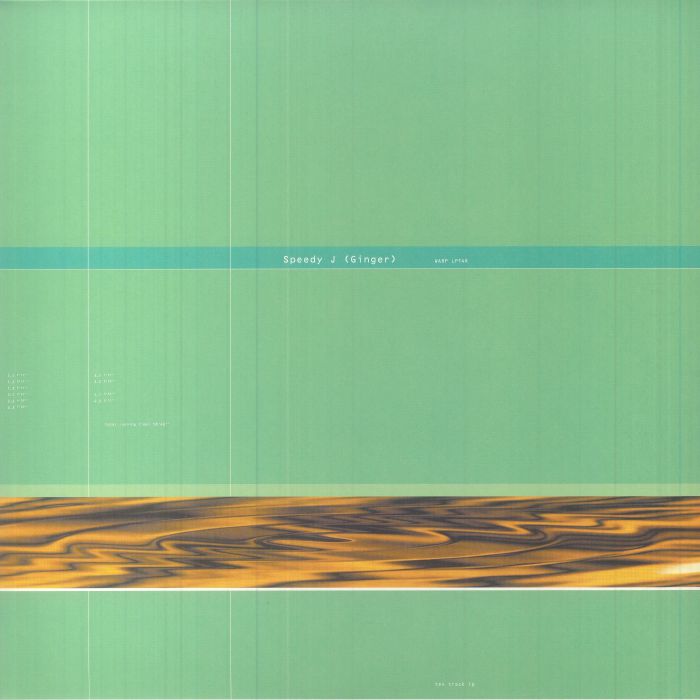Speedy J interview – “Nobody thought this was going to be a job” | Juno Daily
Speedy J talks Ginger, early rave and Stoor Live

“There are times when you’re thinking ‘what the hell is that sound? It’s been going on for like seven minutes. Then you look at your own synth and think fuck, that’s me!”
If we weren’t convinced Speedy J’s Stoor Live epitomised the fervour, fun, and freewheeling spirit all techno events should be about then we are after hearing him explain what it’s like to perform at the dates. Celebrating the chin stroking and unabashed, patient and hedonistic in equal measure, it’s at once the most technically astounding and batshit crazy electronic music experience you’ll encounter all year. In any given year. As Juno Daily discovered on first encounter, last time round.
In many ways, Stoor’s 2023 iteration is different from the last, yet the same. Yes, once again we’re at Paradiso on the weekend ADE reaches its rabid climax. A five day marathon of over 1000 events across Amsterdam, by now we’ve lost ourselves in Rush Hour x Rainbow Disco Club, and indulged in the enigmatic Pieter de Graaf’s grand compositions at the Planetarium. Other options on the table included UK garage don Zed Bias showcasing the sounds of his I Feel Good label, including several Dutch artists, and a somewhat unlikely collaborative EP launch by Paul Van Dyk and DJ Pierre. Nevertheless, Stoor stands out.
Eight hours of improvised, non-stop live music production courtesy of five dons from the world of refined noise, the success of previous editions means this time the format runs over two days, with each iteration involving a different ‘team’, and markedly different results. On the Sunday, we get the eerie qualities of Vril and Rodhad’s Out of Place Artefacts, deep ethereality from Donato Dozzy and Neel’s Voices From The Lake, and Speedy J’s energy-as-art. Half a day after stepping into the venue, we’re knee-deep in a masterclass journey, from rhythmic tension to classy juggernauts, ending in a mind-melting crescendo before the noises themselves seem to collapse in a sonic meltdown, by which point a symbiotic relationship has developed between artists, soundtrack and crowd.
“There really is no format, other than getting a bunch of people together, musicians and video crew, pressing start and hoping for the best,” says Speedy J, AKA Jochem Paap. “The concept is let’s have fun together, and see where we end up. In doing that with an audience it brings back a kind of tension between spectators and the people actually performing. The position you have as a performer, in this environment, is a lot different, because you are as much of a spectator to the whole thing as the audience. This creates something in the audience too — a willingness to be patient, see what happens, let go, listen, hear things fall apart and come back together. It’s fascinating.”
A key to the impact is unarguably the setup. All five artists play ‘in the round’, manning what looks like a space ship’s worth of kit set beneath an obelisk straight from a Borg cube. Experimental visuals displayed on this are created by another team of videographers, using bits made on-the-fly or captured from the show in real time. Presentation-wise, things borrow more from the world of theatre than nightlife, and the fact each side of the floor can see the expressions and reactions of the others heightens the sense of communal joy.

“There’s a lot of planning, in terms of who to put on the team, in terms of what could lead to an interesting outcome, you know? Everyone who is performing, and this includes the visuals as well, is very experienced and courageous to even do this,” says Paap. “Some of the live shows you normally get are way more planned out and have some securities built in. I think stripping all that away and really being in the moment and really just being guided by whatever is happening in the here and now puts everyone in a different kind of focus. I mean, improvising by nature is a very here and now situation.
“It’s that sense of ‘what’s going to happen now?’ You know what has happened to that point, but the next second? Not at all. Nobody does. And in this situation any of the contributors could make a move at any time,” he continues. “Taking action is, I would say, actually less important than just waiting until your moment comes and seizing it. The only way to make this work is to do it for a long time, that’s why we do it for eight hours. So every artist in the group knows that at some point there will be a time for them to jump in and do something, but they don’t feel the urge or necessity to put themselves in the picture all the time… So it could go horribly wrong, if you have an ego in the group, or somebody feels uncomfortable or nervous.”
Stoor Live’s origins lie in the pandemic, when clubs where closed and Paap broadcast studio jams from his Rotterdam bunker, usually with guests, staying connect with fans by giving them an insight into processes and techniques. Post-reopening, feedback made it clear that the idea would work in real life. Now in its third year of ticketed events, by all accounts each date has blown audiences away, and brought out the very best in those responsible for the tunes. The whole thing feels jarringly seamless once you understand how loose it is, although part of the pleasure comes with understanding the risks it all entails.

In many ways, it’s that rawness, leading to a participatory magic, that leaves the most lasting impression. Sounds existed only in the space and situation we experienced them in together, and will never be recreated. A precious impermanence that strikes a chord. With a 30th anniversary reissue of the classic Speedy J album Ginger, part of the seminal Artifical Intelligence series, dropping on Warp this month, our conversation soon turns to ideas of authenticity and rekindling the infectious, impromptu, collaborative atmosphere that defined early dance music culture long before presets, pre-recordings and hot cues.
“I think my recollection of how early events were, compared to how the industry has gone, and how things have developed to the point they are now, there are more similarities [between Stoor Live] and the old parties. Togetherness, a sort of special feeling, I wounldn’t say religious, but early rave was something where the people who were there, all the people, were taking part and contributing, not just watching. There was less of a clear distinction between artists and audience,” says Paap.
“When I made Ginger it was still in the stage where nobody thought this was going to be a job, an industry. It was youth culture at the time. It’s mind blowing that it exploded the way it did,” he continues. “I’m sure everyone involved in the Artificial Intelligence series, and people who were releasing at the time — late 1980s, early 1990s — would say the same. We were just fucking around, you know? Doing cool things with and for our mates. We never expected this to be something that would have such a long life. It was more innocent, I would say even juvenile: just having a good time.”
Martin Hewitt
Click here to buy your vinyl copy of Speedy J’s album Ginger,


